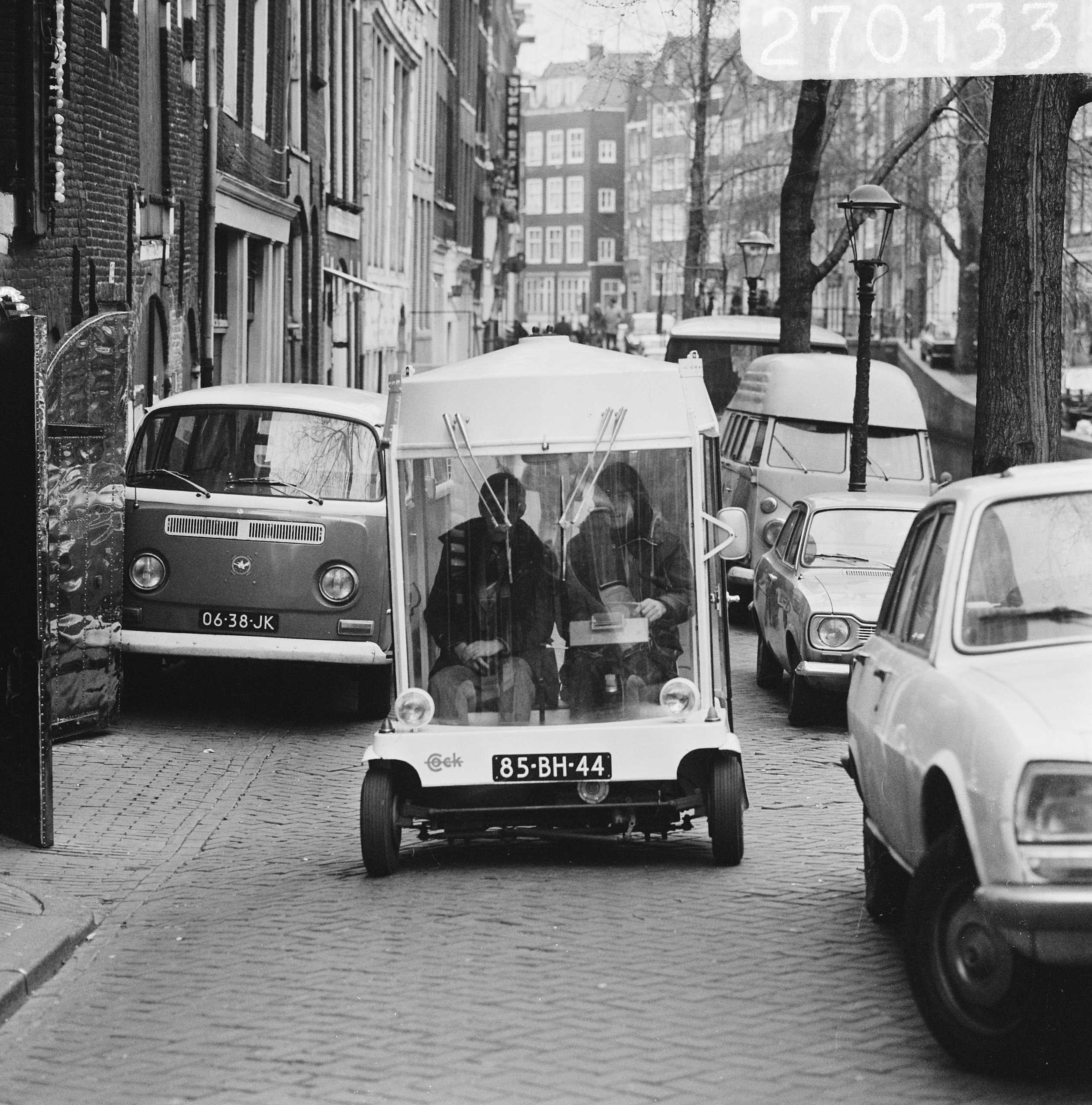Long before it became a global trend, the Netherlands embraced the principles of the sharing economy. The bicycle and car sharing that we know today, for example, can be traced back to the ‘White Bicycles’ and ‘White Cars’ initiated by the Provo movement. Derek Blyth looks back in awe.
© International Institute for Social History
When I moved to Amsterdam in the early 1980s, the little Witkars (White cars) were still puttering along the canals. On the Nieuwmarkt square, near where I lived, there was a battery-charging station that looked derelict but occasionally contained one of these curious white vehicles. I never found out how you drove one of these things – no apps in those days – and quite soon they disappeared from the streets. In 1986, the project was finally shut down.
Almost no one now remembers the Witkars. There is just one surviving example in the Amsterdam Museum in a room devoted to urban transport. But they were in a way the perfect city cars.
The White Car Plan was first proposed by the radical Provo movement in a 1965 pamphlet. Promoted by Provo intellectual and city councillor Luud Schimmelpennink in 1968, the project involved the creation of a fleet of 1,200 shared electric cars.
 Luud Schimmelpennink at the launch of the first White Car station, 21 March 1974
Luud Schimmelpennink at the launch of the first White Car station, 21 March 1974© Collection Spaarnestad Photo/Anefo
These tiny Popemobiles were seen as the future of urban transport – safe, compact and non-polluting. As with the Amsterdam white bike plan – free white bikes you could drop off anywhere in the city – the city council wasn’t interested, but the Provos went ahead anyway. In 1974, they set up a cooperative to run the scheme.
In a 1974 article, Time magazine enthused about the little two-people cars, which were, it said, ‘a cross between a golf cart and a moon buggy’. For the next 12 years, the 24-volt Witkars could be seen bumping along the cobbled streets at a maximum speed of 30 km/h.
 The White Car in Amsterdam
The White Car in Amsterdam© Rob Mieremet / Anefo
The white car project used some fairly advanced technology for 1974 including a central computer that crunched data using punched cards and a neat keycard that was used to access the vehicle.
It could have changed the way people moved around cities, but the world wasn’t ready to make the transition. Only 35 white cars were ever put on the streets. By the mid-1980s, the White Car Plan was in its dying phase. The roadside charging stations were rusting, and the cars had become a joke.
I didn’t get it at the time. I’m not sure many people did, but these cars were the future. Now cities are talking about shared cars, electric vehicles, 30 km/h speed limits – all features of the Amsterdam white car.
The big tech companies in San Francisco are currently spending billions developing safe, ecological electric cars for the cities of the future. Maybe they need to take a look at the little Witkar in the Amsterdam Museum.





